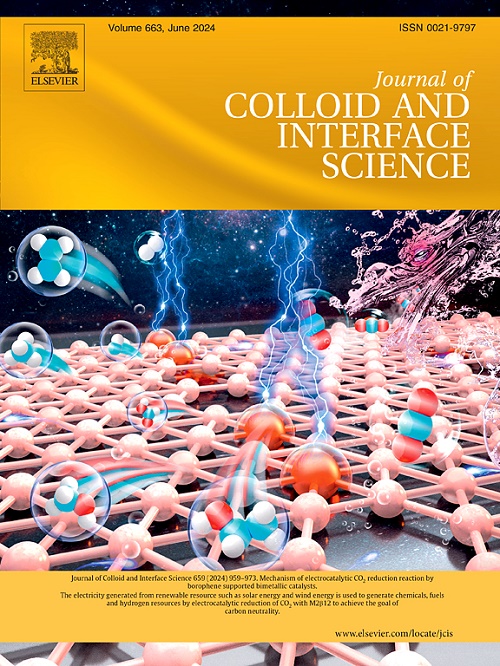Improved tribological properties of MXene nanosheet filler-modified PPO composites
IF 9.4
1区 化学
Q1 CHEMISTRY, PHYSICAL
引用次数: 0
Abstract
MXenes, a class of two-dimensional (2D) nanomaterials, exhibit exceptional properties such as outstanding mechanical and thermal stability, along with diverse surface characteristics, making them highly promising in the tribology. However, their tendency to aggregate within the polymeric matrix adversely affects the tribological performance of the polymer. In this study, glass fiber (GF) surfaces were modified with polydopamine (PDA), allowing smaller MXene nanosheets to adhere to the GF surface, whereas the larger MXene nanosheets were dispersed throughout the matrix. This approach effectively enhanced the dispersion of MXene nanosheets in the polymeric matrix, facilitating the preparation of polyphenylene oxide (PPO)/MXene composite materials. Compared with the pure PPO sample, the results showed that the average friction coefficient and wear rate of the PPO/MXene composites were reduced by 46.25% and 98.34%, respectively, due to the distinct roles of different MXene nanosheet sizes in the polymeric matrix. Furthermore, a uniform lubricating film was formed during the friction of the polymer composite, enhancing its tribological performance. This study proposes a novel design strategy to enhance MXene nanosheet dispersion and optimize their lubricating properties.

改进 MXene 纳米片填料改性 PPO 复合材料的摩擦学性能。
二维纳米材料(MXenes)具有出色的机械稳定性和热稳定性,同时具有多种表面特性,因此在摩擦学领域大有可为。然而,它们在聚合物基体中的聚集倾向会对聚合物的摩擦学性能产生不利影响。在这项研究中,用多巴胺(PDA)修饰了玻璃纤维(GF)表面,使较小的 MXene 纳米片附着在 GF 表面,而较大的 MXene 纳米片则分散在整个基体中。这种方法有效提高了 MXene 纳米片在聚合物基质中的分散性,从而促进了聚苯醚氧化物(PPO)/MXene 复合材料的制备。结果表明,与纯 PPO 样品相比,PPO/MXene 复合材料的平均摩擦系数和磨损率分别降低了 46.25% 和 98.34%,这是由于不同尺寸的 MXene 纳米片在聚合物基体中发挥了不同的作用。此外,聚合物复合材料在摩擦过程中形成了均匀的润滑膜,提高了其摩擦学性能。本研究提出了一种新颖的设计策略,以提高 MXene 纳米片的分散性并优化其润滑性能。
本文章由计算机程序翻译,如有差异,请以英文原文为准。
求助全文
约1分钟内获得全文
求助全文
来源期刊
CiteScore
16.10
自引率
7.10%
发文量
2568
审稿时长
2 months
期刊介绍:
The Journal of Colloid and Interface Science publishes original research findings on the fundamental principles of colloid and interface science, as well as innovative applications in various fields. The criteria for publication include impact, quality, novelty, and originality.
Emphasis:
The journal emphasizes fundamental scientific innovation within the following categories:
A.Colloidal Materials and Nanomaterials
B.Soft Colloidal and Self-Assembly Systems
C.Adsorption, Catalysis, and Electrochemistry
D.Interfacial Processes, Capillarity, and Wetting
E.Biomaterials and Nanomedicine
F.Energy Conversion and Storage, and Environmental Technologies

 求助内容:
求助内容: 应助结果提醒方式:
应助结果提醒方式:


